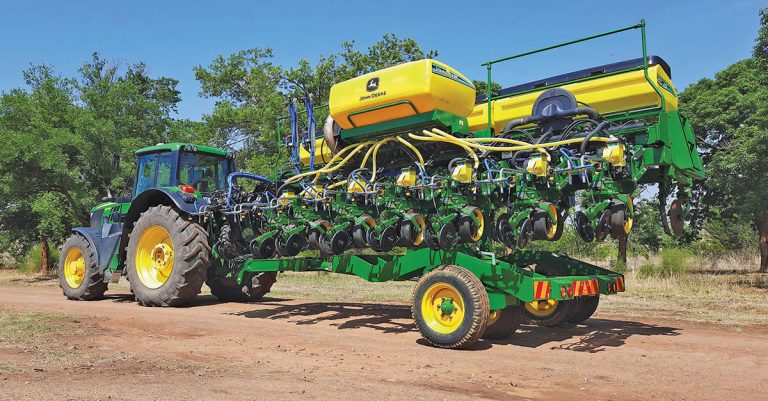The team at Crop Center 360, based in Winterton, KwaZulu-Natal, is a prime example of a group of specialists who work to optimise the way their customers farm today.
They are located in the middle of prime summer and winter grain-cropping regions, and their solutions could eventually be used in most grain production regions across South Africa.
The farms they consult on are considerably smaller than those in other grain-cropping parts of the country, but comprise high-intensity operational practices and a determination by these farmers to optimise every resource at their disposal in the constant fight against diminishing margins. They strive to improve the bottom line and return on investment.
The best way to challenge current practices is to showcase the benefit of the solution you are championing, under exactly the same conditions, on individual farms.
Using technology to address shortfalls
Crop Center 360 tackled the challenge by defining the shortfalls in standard planting practices and addressing the cause of these with technology.
To prove this approach, they equipped a 2013-model John Deere 2113 CCS eight-row, 76cm no-till planter with Precision Planting and Agromac technology. The various components fitted to the planter included:
Generation 3 20|20 System: planting operation monitoring and controlling; vSet/vDrive: row-by-row, electric-driven seed metering; DeltaForce: row-by-row controlled ground pressure; vApply Granular: hydraulically driven granular fertiliser application; Keaton seed firmers: low-stick seed firmers with tail applicators for in-furrow seed treatments or pop-up; Smart firmers: for seed furrow conditions classification, including temperature, moisture, organic matter and furrow debris; and Agromac FertiSystem: granular fertiliser delivery auger.
Each of the components addresses specific, defined losses or shortfalls on the standard planter.
With the attachments being completely modular and bolt-on, with no fitment modifications required on the John Deere 2113, an upgrade installation can be done on site in as little as one day.
With the components, the planter is able to achieve exact plant populations, near-perfect singulation and on-time, even emergence. These are all fundamental building blocks for maximum ear-forming potential.
Rapid on-road travel
An ideal planting date and the window that surrounds it defines the mechanisation capacity a farmer needs to have every seed in the ground as close as possible to the ideal date.
Travel time, refilling and other operational needs affect productivity, which ultimately influences yield. In this instance, a solution had to be found to address travel time, as the trials had to be conducted on several farms within a short space of time.
Crop Center 360 developed its TransPlant attachment, so the planter can commute with ease. With a transport width of 3,5m and a travelling speed of 45km/h, logistical accessibility (in a small window of the season) has proven to be efficient and effective.
The machine orientation between transport and planting mode is less than 40 seconds.
For the summer cropping season of 2021, Crop Center 360 was able to successfully plant more than 350ha of trials over a distance of 400km.
Comprehensive data capture
The Climate Corporation’s FieldView was used extensively, allowing for superior data capture and in-season analytic capabilities.
By using FieldView data, the trials showcased the advancements of the installed planter technology and simplified the process of defining seed hybrids, products, and as-applied rates.
The trial work included many maize hybrids, populations and product application trials, and it was therefore important to record what was done in each instance to ensure a fair comparison.
The results were in favour of the CropCentre 360 planter; increases in yield results ranged from 3% to 7%.
Farmers often look at yield only when comparing results, but much more goes into a profitability calculation than simply a high yield.
Yield comes at a cost, and because the trials were conducted on individual farms next to the existing planter used on the farm, it is fair to assume that direct input costs were the same.
Therefore, the other major contributor to overall profitability will be the cost of the technology fitted to the planter, and this was found to pay for itself, with a return on investment achieved within the first season of its use.
For further information, contact Crop Center 360 at tech@cropcenter360.com.



